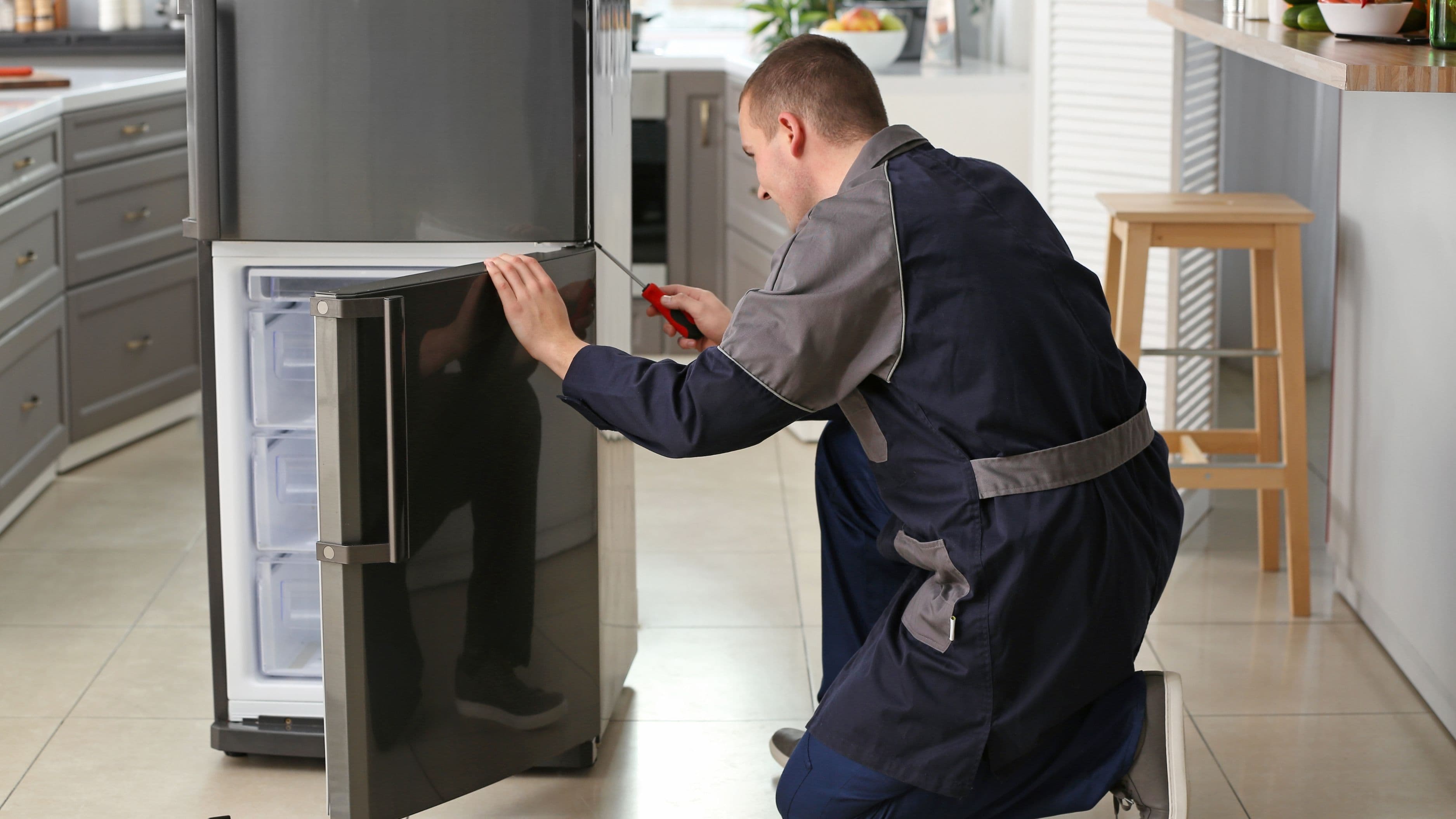Let's walk through the most common culprits behind everyday appliance problems and how to tackle them without spending a dime on professional help.
1. The Refrigerator That Won't Keep Its Cool
When your fridge starts feeling more like a lukewarm cabinet, don't panic just yet. The most overlooked villain here is the condenser coil, which gets clogged with dust, pet hair, and kitchen grime over time. Pull your fridge away from the wall and locate the coils—they're usually on the back or underneath. Vacuum them thoroughly using your hose attachment, then wipe them down with a damp cloth. This simple act improves airflow and can restore your fridge's cooling power instantly.
Next, check the door seal by closing the door on a dollar bill. If you can pull it out easily, your gasket isn't sealing properly, letting cold air escape like a window left open in winter. Clean the seal with warm, soapy water to remove any sticky residue, and if it's cracked or torn, you can order a replacement online for around $50—still cheaper than a service call. Also peek inside and make sure nothing's blocking the vents where cold air flows from the freezer to the fridge section.
2. The Washing Machine Playing Lake Superior
Water pooling around your washing machine feels like a disaster, but it's often just a loose connection throwing a tantrum. First, pull the machine away from the wall and inspect the hoses running to your water supply. Tighten any connections that feel loose—sometimes they work themselves free from all that vibration during spin cycles. Look for cracks or bulges in the hoses themselves; these rubber lines wear out over time and need replacing every five years or so.
If the hoses look fine, check the drain hose next. It might be clogged with lint, coins, or that mysterious sock collection that disappears in every household. Disconnect it carefully over a bucket to catch any trapped water, then flush it out with a garden hose outside. Sometimes the culprit is even simpler—the machine isn't level, causing water to slosh over the edges during aggressive cycles. Use a level tool and adjust the feet until your machine sits perfectly flat.
3. The Dryer That Takes Forever
When your dryer runs and runs but your clothes stay damp, you're literally watching money evaporate into wasted energy. The lint trap is everyone's first suspect, but here's what most people miss—cleaning that little screen isn't enough. Pull the trap completely out and wash it with hot, soapy water every month to remove the invisible film left by dryer sheets. This film blocks airflow even when the trap looks clean.
Beyond that, trace the dryer vent from your machine all the way to where it exits your house. This duct becomes a lint highway over time, and when it gets clogged, your dryer can't breathe properly. Disconnect it at both ends and snake it out with a special dryer vent brush, or vacuum as far as you can reach. You'll be shocked by what comes out—think felt-like clumps that could stuff a pillow. A clear vent means faster drying, lower energy bills, and most importantly, reduced fire risk.
4. The Dishwasher Leaving Gritty Souvenirs
Nobody wants to unload supposedly clean dishes only to find yesterday's dinner still clinging to them. Before you assume your dishwasher is broken, check the spray arms—those spinning things that shoot water everywhere. They have tiny holes that get clogged with food particles, hard water deposits, and mysterious kitchen gunk. Pop them off (they usually just twist or snap out) and use a toothpick to clear each hole. Hold them up to the light to make sure water can flow freely.
The filter at the bottom of your dishwasher needs regular attention too, yet most people don't even know it exists. Consult your manual to find it—usually it's beneath the bottom spray arm—then remove it and rinse away all the trapped food debris. Some models have self-cleaning filters, but most require manual cleaning at least once a month. While you're down there, spin the spray arms by hand to ensure they're not catching on anything.
5. The Oven That Can't Tell Temperature
When your baked goods come out raw or burnt despite following recipes to the letter, your oven's temperature sensor might be fibbing. Buy an inexpensive oven thermometer and place it inside while preheating to your usual temperature. If the thermometer reading differs significantly from your oven's display, you've found your problem. Sometimes recalibrating the oven through its settings menu fixes this—check your manual for the specific button combination.
The heating element itself could also be the troublemaker. For electric ovens, visually inspect the bottom element for breaks, blisters, or dark spots. A faulty element won't heat evenly or at all, and they're actually pretty simple to replace. You'll need to shut off power at the breaker, remove a couple screws, disconnect the wires, and reverse the process with your new part. Gas ovens are trickier and usually warrant professional help, but checking that your pilot light is properly lit costs nothing.
6. The Microwave That Sparks Drama
Seeing sparks fly inside your microwave feels genuinely alarming, but it's usually not a death sentence for your appliance. Metal is the most common culprit—check for twist ties, aluminum foil, or dishes with metallic trim. Even that innocent-looking plate might have a gold rim causing the fireworks. Remove any metal objects and you've likely solved your problem.
The waveguide cover, a small panel inside the microwave cavity, also deserves a close look. This piece protects the magnetron (the part that creates microwaves) from food splatter. When it gets burned, cracked, or coated with grease, it can cause sparking. If it's just dirty, wipe it down with a damp cloth. If it's damaged, replacement covers cost under $10 and snap right into place—just make sure to unplug the microwave first.
7. The Garbage Disposal Playing Possum
That humming sound without any grinding action means your disposal is jammed, not broken. Most units come with a small Allen wrench specifically for this problem—check under your sink or in the manual. Insert it into the hex-shaped hole at the bottom of the disposal unit and manually rotate the grinding mechanism back and forth. This usually frees whatever's jamming things up, whether it's a rogue chicken bone or accumulated gunk.
If you don't have the special wrench, try the broom handle method. Unplug the disposal or turn off the breaker, then use a wooden spoon or broom handle to manually rotate the blades from above. Once you've freed the jam, hit the red reset button usually located on the bottom or side of the unit. This little button trips when the motor overheats, and resetting it is like giving your disposal a second chance at life.
8. The Ice Maker on Strike
An ice maker that stops producing feels like a first-world crisis during summer. The water supply line often freezes (ironically) due to a too-cold freezer setting or poor circulation. Try unplugging the fridge for a few hours to let any ice blockages thaw, then check your freezer temperature—it should be around 0°F, not colder. Lower temperatures can cause the supply line to freeze repeatedly.
The water filter also plays a surprisingly big role here. A clogged filter restricts water flow to your ice maker, essentially starving it. Most manufacturers recommend changing filters every six months, but hard water areas might need more frequent replacements. While you're investigating, make sure the ice maker's arm isn't stuck in the up position, which tells it to stop making ice because the bucket is full.
9. The Stove Burner That Won't Light
Gas stove burners that click repeatedly without igniting are usually just crying out for a good cleaning. Food spills block the igniter—that small ceramic nub near each burner—preventing it from creating the spark needed to light the gas. Turn off the stove and remove the burner cap and head. Use a toothbrush and warm, soapy water to scrub away any crusty buildup, paying special attention to the igniter itself. Let everything dry completely before reassembling.
Sometimes the burner ports get clogged too, creating weak or uneven flames. Straighten a paperclip and gently clear each small hole around the burner ring. You'll feel satisfying resistance as you push through the blockages. For electric stoves, a burner that won't heat up often just needs to be unplugged and plugged back in—the connection can loosen over time. If that doesn't work, swap it with another burner to see if the problem follows the element or stays with the socket.
10. The Noisy Appliance Symphony
Mysterious banging, rattling, or grinding noises from your appliances can be unsettling, but they're often just loose parts having a conversation. For washing machines, the usual suspect is an unbalanced load or coins jingling around in the drum. Stop the cycle, redistribute your clothes evenly, and check pockets for change before washing. Sometimes the shipping bolts that stabilize the drum during transport weren't removed during installation—check your manual and remove these if present.
Refrigerators develop rattles when contents on shelves vibrate against each other or when the drain pan underneath gets loose. Open your fridge and reorganize items so they're not touching, then slide out the pan beneath and make sure it's seated properly. Dishwashers often make racket when spray arms hit dishes that are loaded improperly, so reload with care. Most appliance noises are simply parts that need tightening, cleaning, or better arrangement.
The truth hiding behind most appliance problems is refreshingly simple—they're usually begging for basic maintenance rather than expensive repairs. Your appliances work hard every single day, and like any hardworking teammate, they need a little attention to keep performing at their best. Before you dial that repair service and prepare to empty your wallet, spend twenty minutes playing detective with these common issues. You might discover you're more handy than you ever gave yourself credit for.
What's one appliance problem you've been putting off that you could tackle today with just a screwdriver and some determination?
📚 Sources
1. U.S. Department of Energy - Energy Saver Guide: Maintaining Your Appliances
2. Consumer Reports - Annual Appliance Reliability Survey (2024)
3. National Fire Protection Association - Home Fires Involving Cooking Equipment Report
🔍 Explore Related Topics










